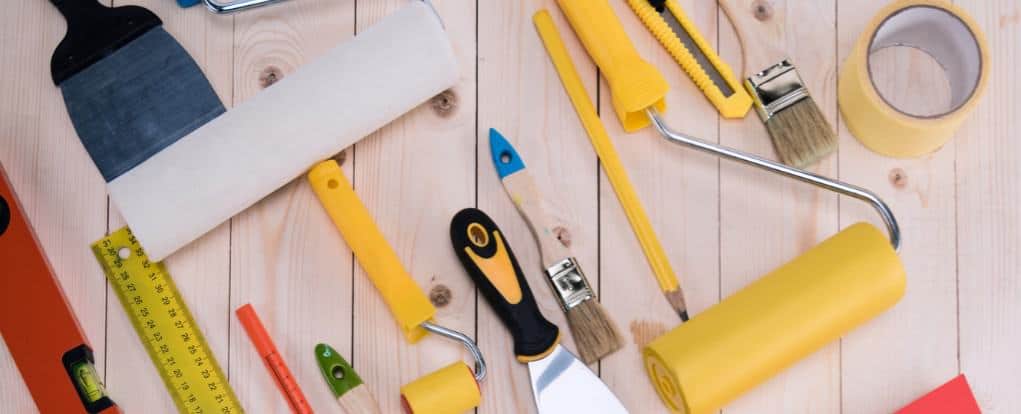Even as we work and play our way through the high tech world of the 21st century, the good old fashioned paint brush is still the most preferred tool for applying paint in and around the home.
1. Paint Brushes
The best rated brushes are those made from natural bristle, with pig or boar being the most preferred. However as with most things, you get what you pay for and natural bristle brushes are usually the most expensive to purchase. A tradesman painter mate of mine always used to say that good quality brushes were like good wine – they improve with age! His method of “breaking in” a new brush was to first use it to apply primer and undercoats where it didn’t matter when the brush shed a few hairs as all new brushes will. Plus as you use a brush, the tips of the bristles become round and this gives a smoother finish to your paint job. Cheaper brushes made from synthetic fibres are also available and some are getting almost to the quality of the natural bristle brushes.
If you are contemplating purchasing new paint brushes, first spend a little time browsing through the selection available at your local Mitre 10 store. Take into account quality, price and the job you want the brush to do.
You can do most DIY work with four sizes of brushes: 50mm, 25mm and 13mm for general work and a 100mm brush for walls and ceilings. An angled cutting-in brush (13mm) is a useful addition if you have a lot of work to do around window frames. A cutting-in brush will help you get a nice neat finish without paint getting on to an adjacent surface.
2. Paint Rollers
You can apply paint more quickly using a roller than you can do with a brush and they are also less tiring to use. Rollers come covered in a variety of materials to suit specific jobs: foam for general-purpose work; mohair for a smooth finish; shag pile for textured or roughcast surfaces. The disadvantages of rollers are that they tend to use a lot of paint, rarely give a truly smooth surface finish, and you will still need a brush for corners and cutting-in work.
3. Paint Pads
My most preferred option for large surfaces is the Paint Pad. These pads are usually made from a layer of foam with mohair bonded to on to the surface. The pads in turn are fitted to a plastic handle. Paint is poured into a tray with a roller applicator fitted and the pad is drawn across the roller taking up paint into the mohair. The paint is then simply ‘wiped’ onto the surface being painted. A very easy and clean method of applying paints.
(Written for Mitre 10 by Chris Bennett.)







